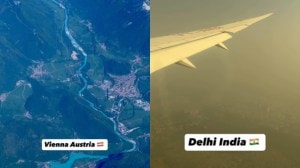And Tigers too shall fly
The air strike by the LTTE this month shows how dangerously the civil war is escalating in Sri Lanka

• What are the implications of the LTTE air strike near Colombo?
First of all, this is the first time that the Tigers have used — in fact, shown — air power. It had been believed for a while now that they were trying to get air capability, and so the light craft used them last Monday (March 26) should not have come as much of a surprise to the Sri Lankan forces. What is amazing is that the pilots pulled off the flight undetected.
They flew out of an airstrip presumably in the Vanni (area held by LTTE) about 400 km to the Lankan air force at Katanayake, north of Colombo. And they then flew back. Interestingly, the Katanayake base shares a runway with the international airport that serves Colombo. This possession of air power by non-state actors brings into peril international air protocols.
• Does this make a return to the ceasefire even more difficult?
Afraid so. The incident comes against the backdrop of heightened government operations to regain territory in the northeast of the island. By one estimate, more than 4,000 people have died in fighting since end 2005, roughly coinciding with the election that brought Mahinda Rajapakse as president.
• How is that election significant?
Rajapakse picked up a lot of support in the election from the south, where support for a negotiated settlement is relatively weaker. In addition the government gained support from Sinhala hardline parties like the JVP and the JHU. He himself has been impatient with the LTTE’s repeated violations of the ceasefire, and has been quoted as saying he does not want to leave the problem for the next generation.
• But does his government really have any option but to rebuff the rebels militarily?
Point taken. But the government has to be seen to be assisting the Tamil population caught in the crossfire, else the kind of displacement that’s come in recent months will only give the LTTE propaganda increased resonance.



- 01
- 02
- 03
- 04
- 05




























